Posted on: 26/01/2023
At Literacy Tree, we are passionate about having carefully designed sequences which demonstrate a clear and coherent journey through a high-quality text. For us, the process is key to the outcomes. As children ‘travel’ through the text, we want them to be fully immersed in a literary world, whilst also being taught specific skills which lend themselves to the particular part of the book they are studying, being taught the right grammar at the right time. This journey through a planning sequence builds sequentially to result in longer written outcomes which allow children to apply the skills they have been learning, revising and practising throughout the sequence.
In order to be able to do this successfully, it is essential that children are able to look back over the skills they have learnt and practised in context, in order to be able to apply them to longer pieces of writing. Whilst looking back through their books is one way of achieving this, an effective working wall is invaluable in supporting children to apply taught skills in context and weave together literary techniques and language to apply to their own writing. Unlike a display of finished outcomes, a strong working wall acts as a road map, guiding children through the planning sequence and supporting the deepening and application of skills and language in context. Used effectively, it can act as an additional adult in the room you didn’t realise you had, increasing children’s independence and freeing up teachers and TAs to work with a wider range of children. In recent school visits, we have seen some fantastic examples of working walls in practice with clear evidence of children using these effectively to support their writing. With this in mind, we have collated some top tips to support you in the design of an effective and purposeful working wall to improve independence in your class.
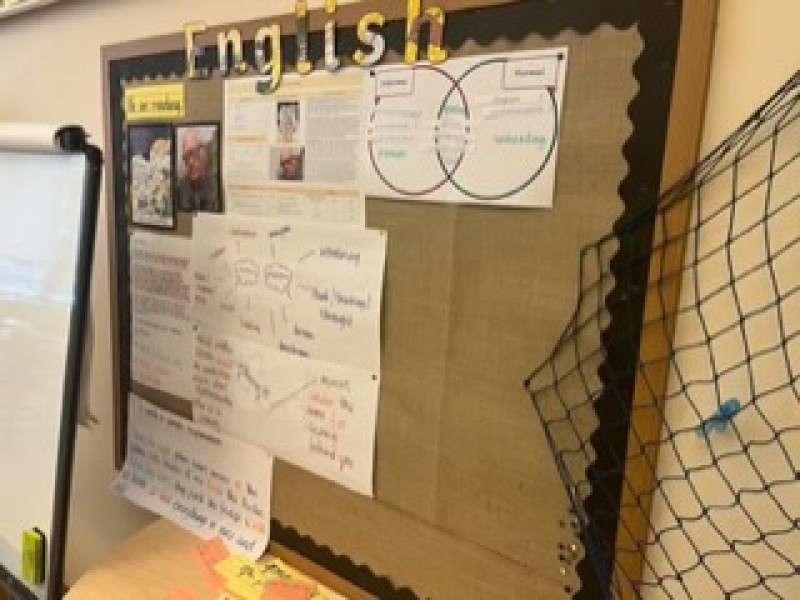
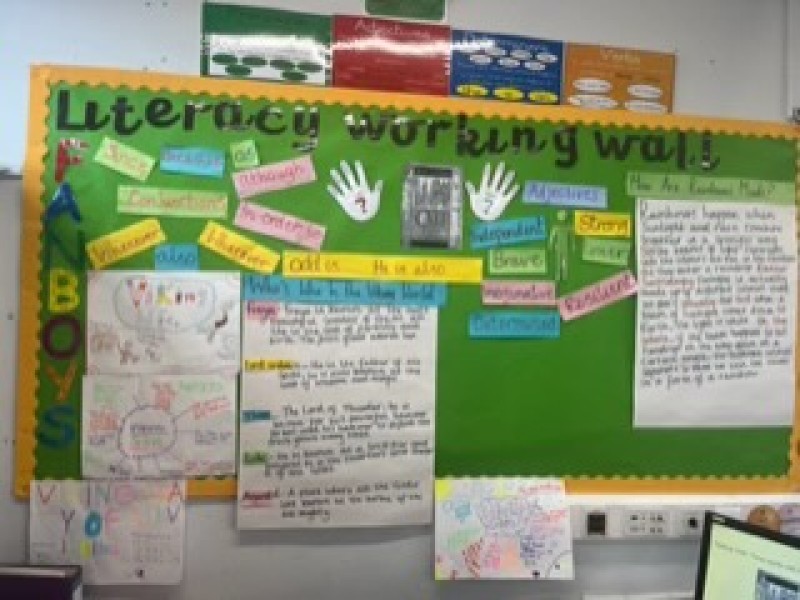
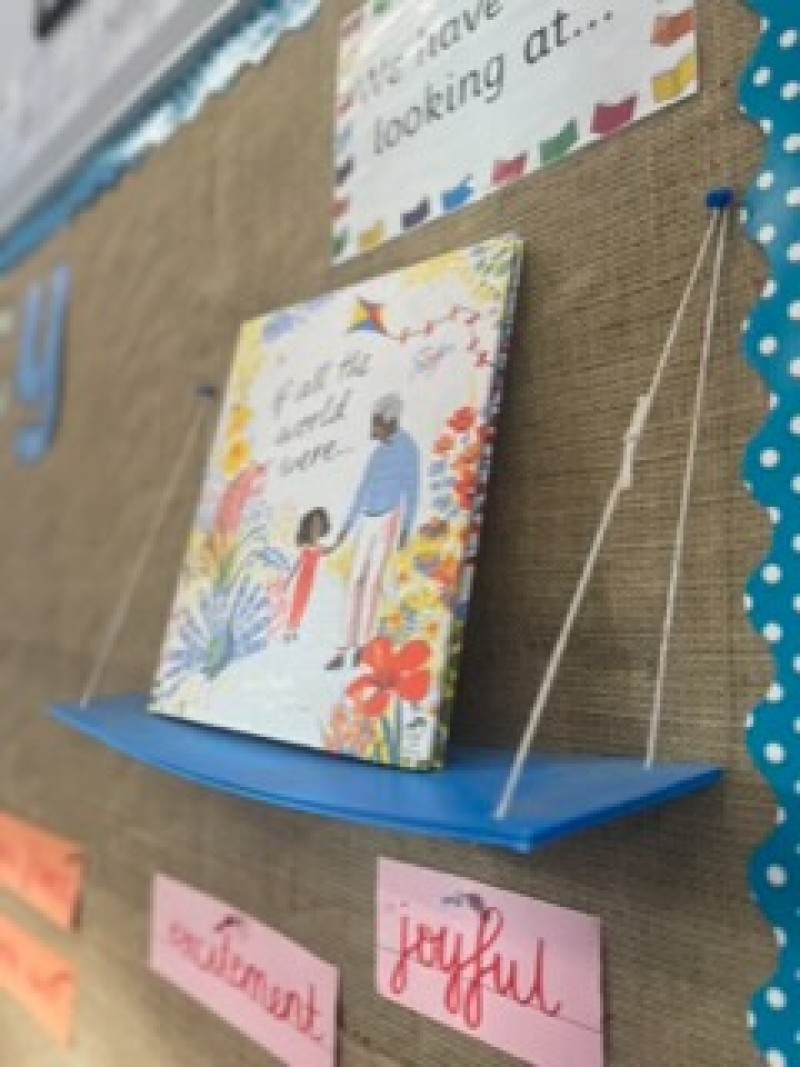
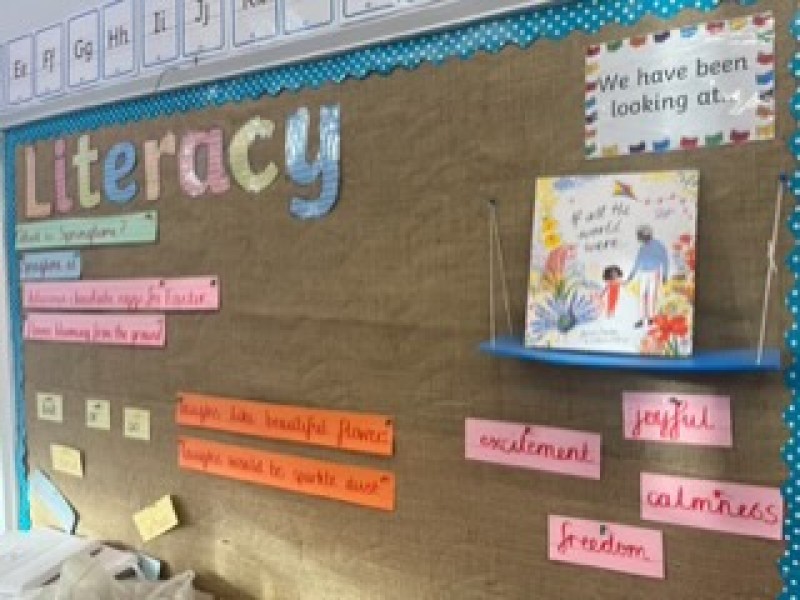
Plan it out
As the process of building a working wall is very organic, it would be impossible to plan exactly what your working wall will look like before starting a sequence. That being said, it is useful to consider which elements of a planning sequence will be most helpful to add to your working wall. When planning out the sequence and considering how you will adapt it to the needs of your class, why not annotate the planning with possible aspects which could lend themselves well to the working wall? See it as an additional resource opportunity for each lesson. Which skills or language building tasks would be helpful to refer back to when children begin their written outcomes? It can also be useful to sketch out roughly what you envisage it looking like and what might go where, whilst at the same time bearing in mind that things will need to be replaced and added in as you progress throughout the sequence. What should stick throughout and what can be removed? Remember that working walls are not displays of work and as such bordering and laminating is simply not necessary. They need to be accessible, legible and inviting but should not involve any additional preparation – rather more just careful selection of what you are already using and creating as part of your teaching.
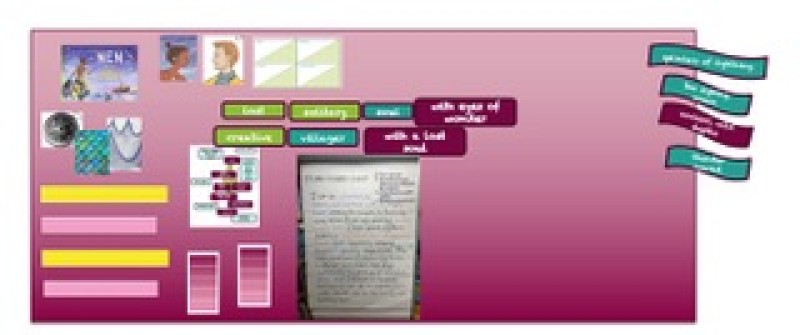
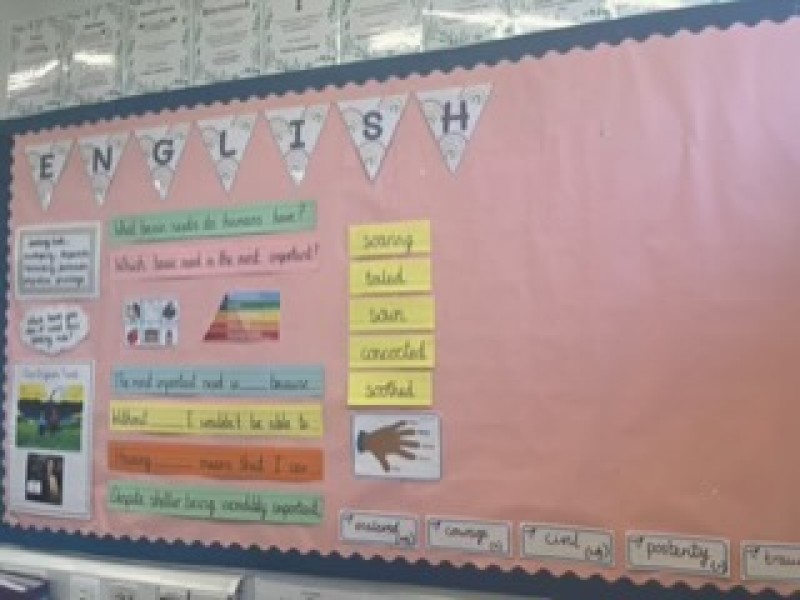

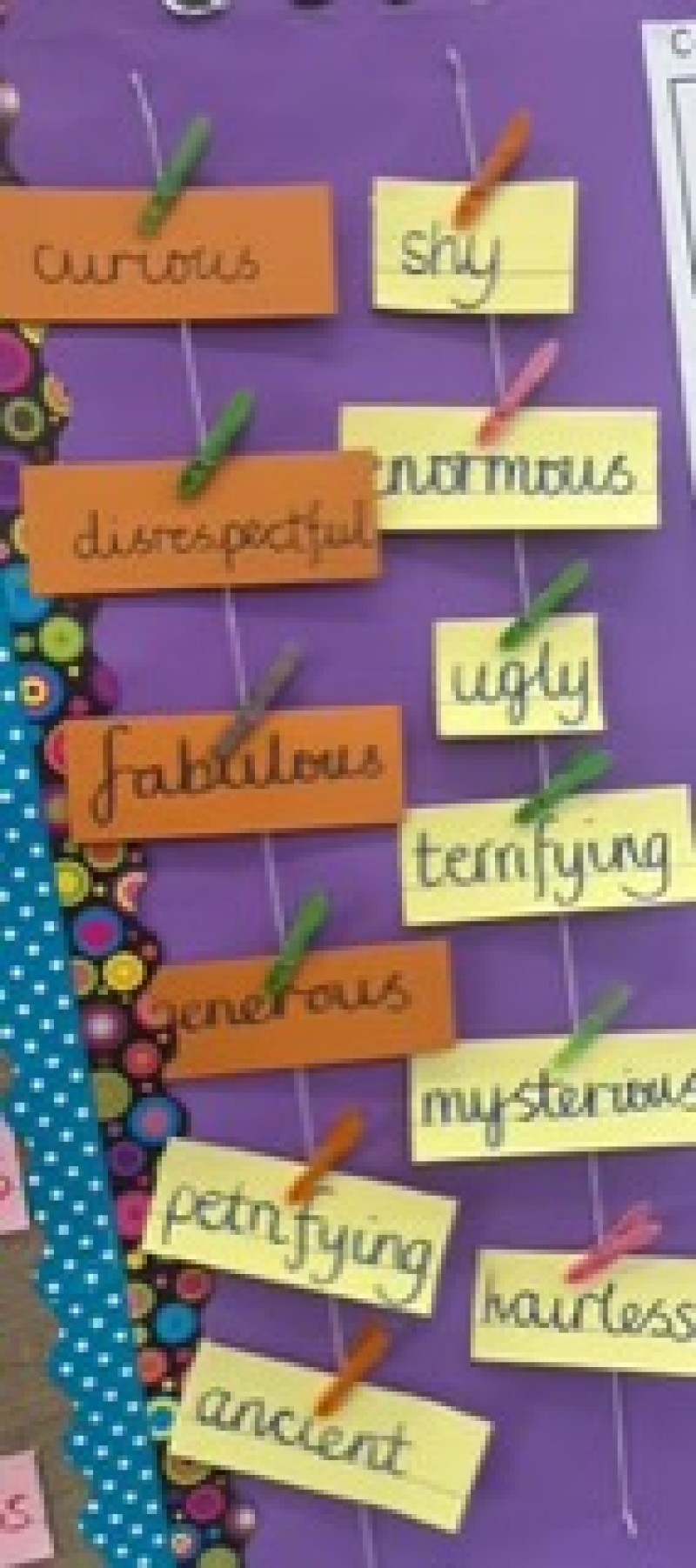
A team effort
Consider your working wall as a team effort. From your side, display your own live modelling of key skills in context and written outcomes – this could be word or sentence level, or longer modelled paragraphs applying taught skills. The working wall should demonstrate the build-up of contextualised skills into application, including the editing process. As well as this, think about how you can include children’s own work to support others. Rather than displaying finished pieces as examples, think about the process to get there, for example this could be a group character splat that has been created, sentence strip work or post it notes of vocabulary. We want to get to a point where children are saying, “That would be really helpful for our working wall!”. Involving children in the creation of the working wall will not only give them a sense of involvement, but it will make it easier to train them into using it to support their independent writing.
When used effectively, working walls become an interactive support to engage children in discussion and promote independence, forming a key part of scaffolding to support them with their writing. To make them work at their best with a book-based approach, remember to:
Start simply, with the book cover pride of place, adding carefully selected aspects of the sequence to the working wall as you go.
Plan it out, considering which elements of a sequence will lend themselves well to the working wall and what will be most helpful to your children to support their writing.
Be selective about the vocabulary and language you display – focus on specific literary language and Tier 2 vocabulary you want to teach for them to apply in their own writing.
Be creative with space and think carefully about how you can maximise the use of all corners of your classroom.
Include your own live modelling of writing alongside children’s contributions to make the working wall a team effort and increase engagement.
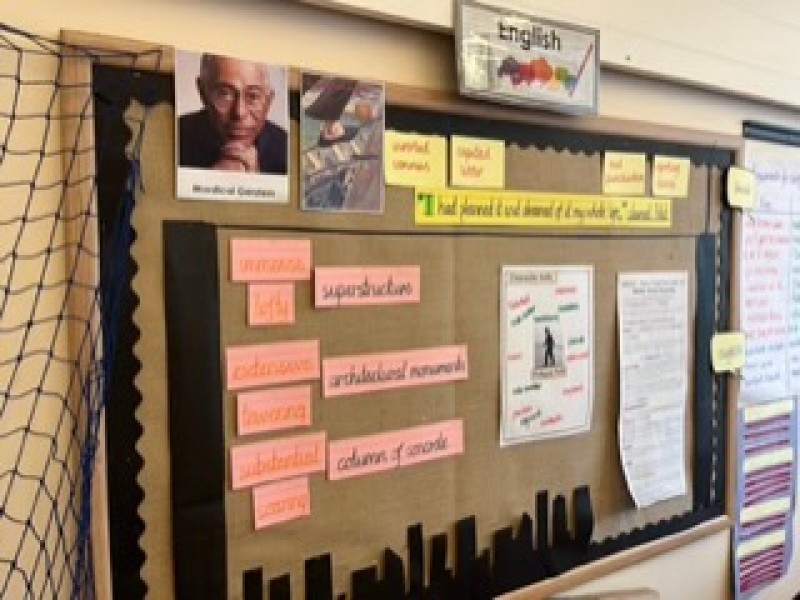
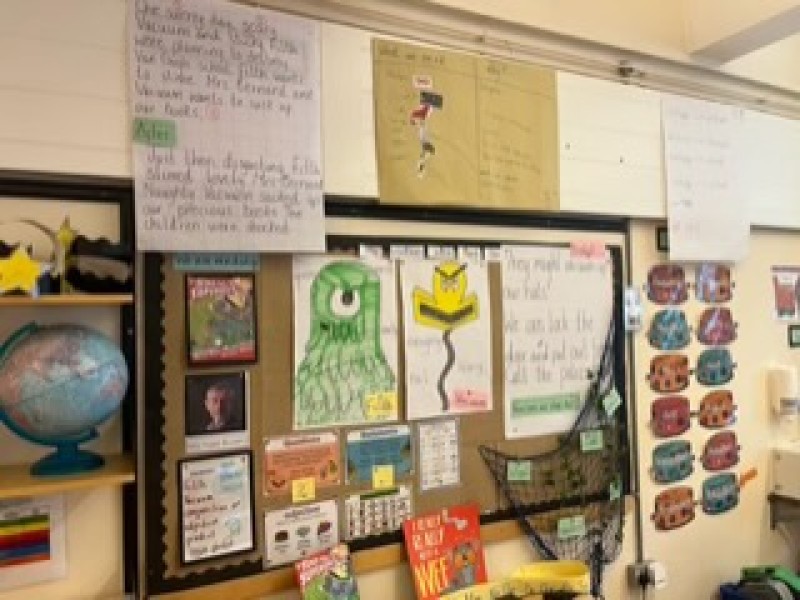
We hope this collection of tips will support you in developing working walls further in your own setting when you teach through a text – please do share any photos with us as we always love seeing your creative approaches and how your working walls support children with a book-based approach!
Posted in: Curriculum